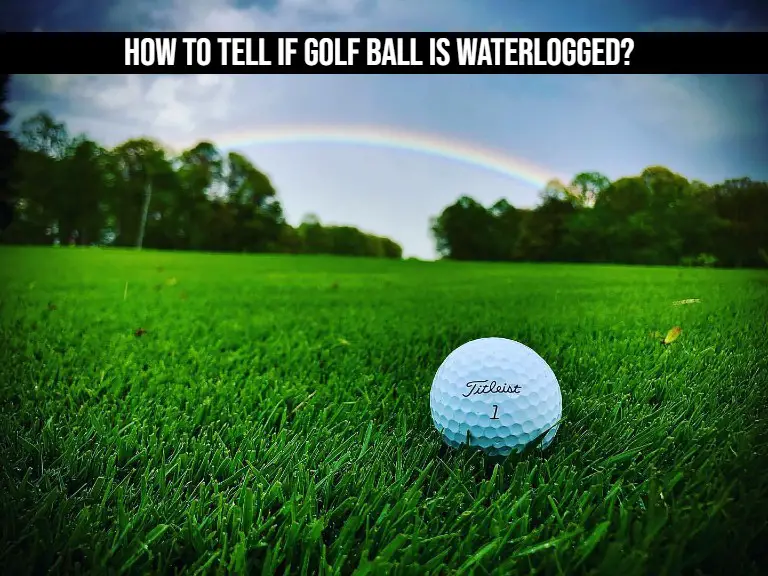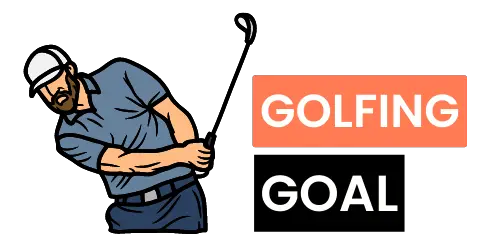
Wondering how to tell if a golf ball is waterlogged? You’re in the right place. Waterlogged balls can ruin your game by losing distance and accuracy.
Learn to spot the signs of water damage and ensure your equipment is always top-notch. This guide will help you maintain optimal performance on the course.
What is a Waterlogged Golf Ball?
A waterlogged golf ball has absorbed water into its core. This happens when the ball spends time submerged in water. The outer layer allows moisture to seep in, affecting performance.
Signs Your Golf Ball Might Be Waterlogged
1. Increased Weight
Waterlogged golf balls weigh more than dry ones. The official weight should be 1.62 ounces. If your ball feels heavier than usual, it might be soaked.
2. Color Changes
Prolonged water exposure can cause discoloration. A waterlogged ball may turn yellow or brown. This color change indicates moisture has seeped in.
3. Sound Differences
When struck, a waterlogged ball produces a muted thud. In contrast, dry balls produce a crisp crack. This difference in sound is due to the internal water absorption.
4. Loss of Distance
Waterlogged balls can lose up to 30 yards in distance. This significant drop affects your game performance noticeably.
5. Inconsistent Flight
Waterlogged balls have erratic trajectories. They don’t fly straight and may veer unexpectedly. This inconsistency in flight can disrupt your shots.
Testing Methods to Determine If a Golf Ball is Waterlogged

1. Visual Inspection
Look for discoloration or cracks. A waterlogged ball often shows yellow or brown spots. This indicates prolonged water exposure. Check the ball’s surface thoroughly.
2. Weighing Test
Use a precise scale. A standard golf ball weighs 1.62 ounces. If your ball weighs more, it might be waterlogged. Compare with a new ball for accuracy.
3. Float Test
Place the ball in a cup of water. A waterlogged ball tends to sink. Dry balls usually float or remain near the surface.
4. Sound Test
Tap the ball with a club. Listen for a muted thud. A waterlogged ball sounds dull compared to the sharp crack of a dry ball. Practice this test to notice differences.
5. Performance Test
Hit the ball on the course. Measure its distance and flight. Waterlogged balls lose up to 30 yards in distance and have erratic flight paths. Compare with a dry ball to observe changes.
Impact of Waterlogged Golf Balls on Performance

1. Reduced Distance
Waterlogged balls can lose up to 30 yards. This loss affects your game significantly, making it crucial to use dry balls for consistent distance.
2. Inconsistent Flight
Waterlogged balls have erratic trajectories. They don’t fly straight and can veer unpredictably. This inconsistency disrupts shot accuracy, leading to poor performance on the course.
3. Altered Spin Rates
Waterlogged balls exhibit different spin rates. This change affects control, especially on approach shots. Reduced spin can lead to less stopping power on greens, affecting scoring potential.
4. Weight Increase
The absorption of water increases the ball’s weight. Heavier balls result in slower swing speeds and less energy transfer. This weight change directly impacts overall performance.
How to Prevent Your Golf Balls from Getting Waterlogged?
1. Proper Storage
Store golf balls in a cool, dry place. Avoid areas with high humidity or temperature changes. A consistent environment keeps the balls dry and intact.

2. Use Water-Resistant Balls
Some balls are designed to resist water absorption. These balls use special coatings that help prevent waterlogging. Brands like Titleist and Callaway offer such options.
3. Regular Inspection
Check your balls for cracks or damage. Even small cracks can let water in. Replace damaged balls promptly to avoid performance issues.
4. Quick Retrieval
If a ball lands in water, retrieve it quickly. The longer it stays submerged, the more water it absorbs. Dry it thoroughly before using it again.
Wrap Up!
Understanding how to identify a waterlogged golf ball is essential for maintaining performance on the course.
Waterlogged balls can compromise your game by adding weight, altering spin, and reducing distance. Regular checks and quick retrieval from water hazards can prevent this issue.
By using simple tests like visual inspection, weighing, and performance analysis, you can ensure your balls are in optimal condition.
If you’re unsure about what to do with old or damaged balls, check out our guide on old golf balls for more tips.

Bob is a golf equipment expert with a wealth of knowledge about the latest and greatest golfing gear. Bob is our Lead Product Reviewer and provides in-depth reviews and recommendations on the best equipment for golfers of all levels. He takes a hands-on approach to testing, using his extensive experience on the course to provide the most accurate and reliable product recommendations. Join Our Team!
